We’ve had a very chilly April. While I have not heard anyone mention Alberta clippers lately, I see that the winds still seem to be sweeping down and over through western Canada. I wrote about what I hoped was the final April snow on April 10, which would have been roughly average. We had more snow on April 17, and a week in there somewhere with daily flurries. It’s only 43°F right now, and it’s late morning. The garden is moving slowly, but despite the temperature and some very hungry rabbits, there are flowers blooming.
I love the traditional bulbs for their cheery color, but I love the native ephemera for their ability to draw me out of doors to take a closer look; Dutchman’s breeches, rue anemone, and twinleaf erupt with both leaves and flowers, much like early bulbs. The rue anemone and twinleaf do not show green until they are blooming, but the Dutchman’s breeches emerge with some green in their leaves. I am not sure about much when it comes to the round-lobed hepatica, which emerges hirsute—it has very furry flower buds. (See the seventh photograph.)
Dutchman’s Breeches
Dutchman’s breeches push up and unfold like modern dancers.
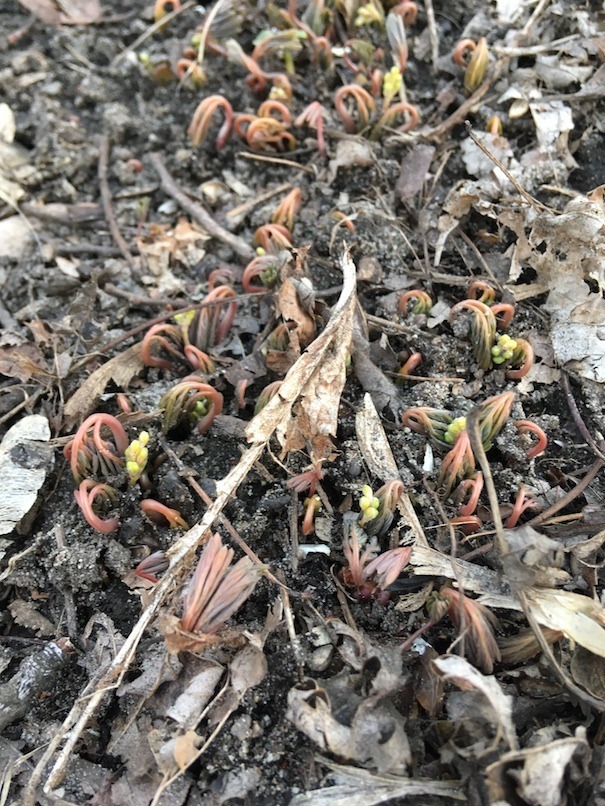
It goes from improbably scraggly to a beautiful carpet in a rather singular shade of blue green.
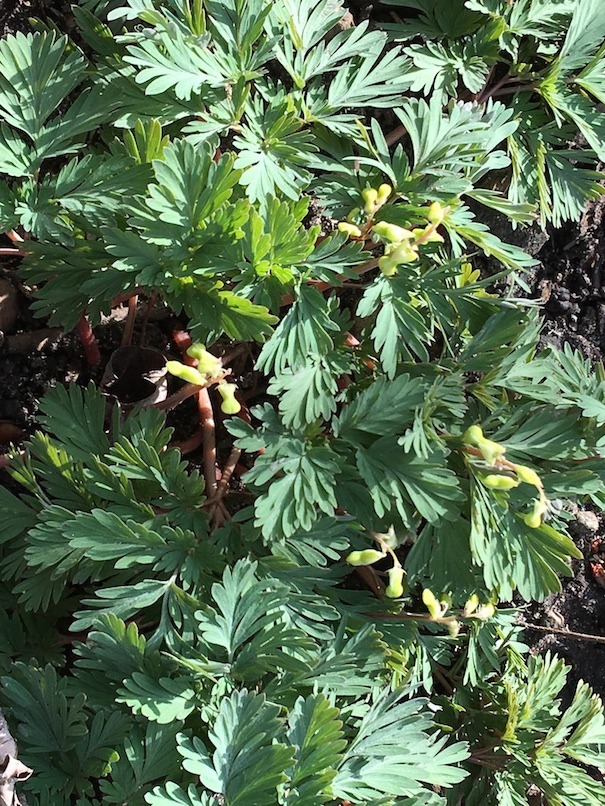
This plant is in the same family as bleeding hearts. Within a few days, the resemblance is obvious.
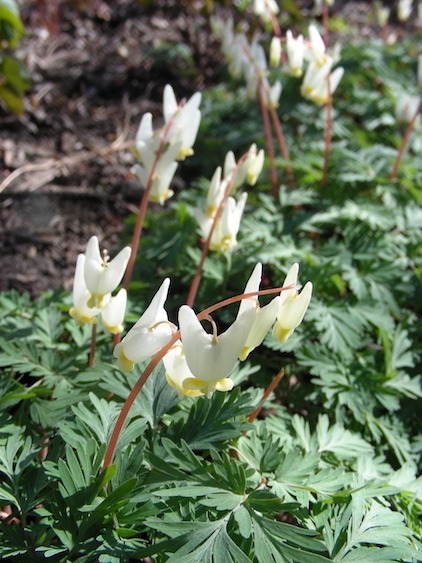
Round-lobed Hepatica
This is really quite a hairy little plant.
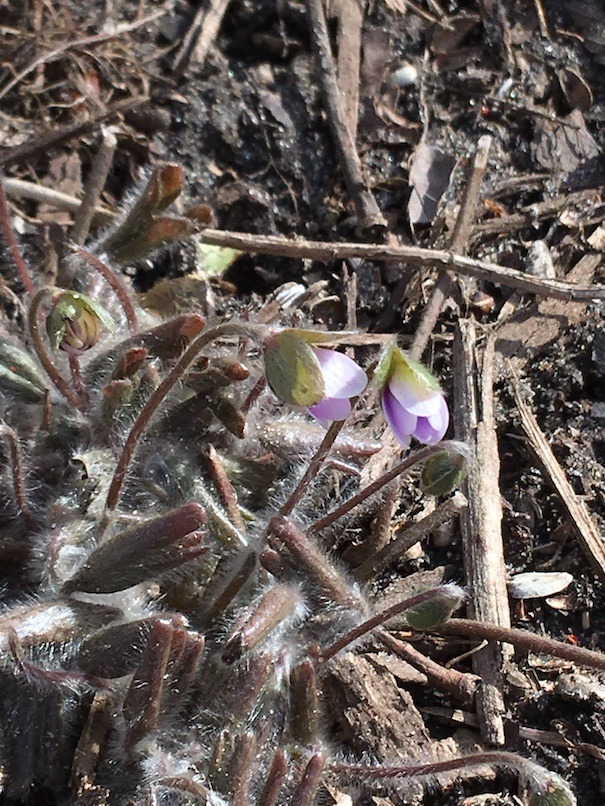
Within a few days, the leaves and flowers popped open.
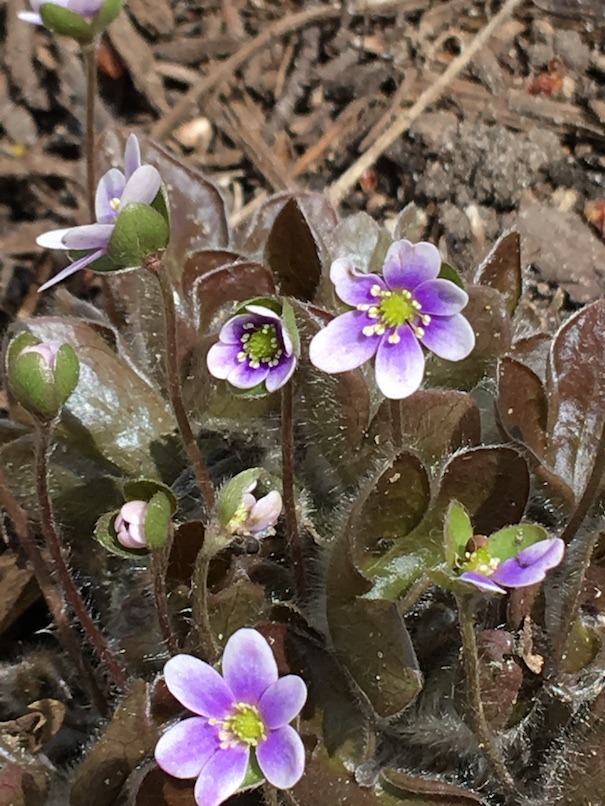
When I checked on these this morning, I discovered that many of the flowers had been mown off one of the plants. I suspect rabbits—they mow—but it is interesting that they didn’t bother the leaves. Maybe they don’t like the hair. If they would mow the lawn instead, I would be very happy.
Rue Anemone
These started to appear on April 2. They are very easy to mistake for the fallen silver maple flowers if you don’t look closely. These erupting plants are pinker and tidier; the dropped silver maple flowers are redder and have spent stamens hanging off them like hair.
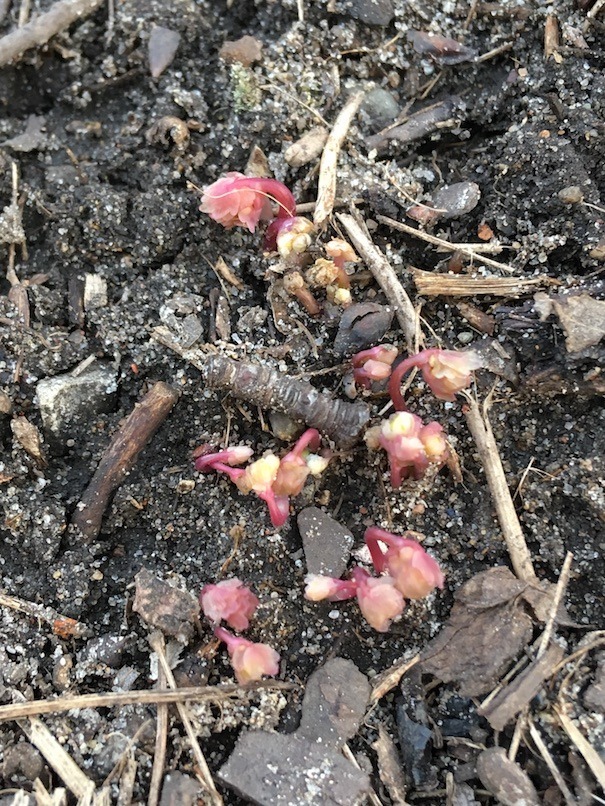
Snow doesn’t slow early spring flowers down. We had a generous dusting on April 17. The rue anemones look rather defiant.
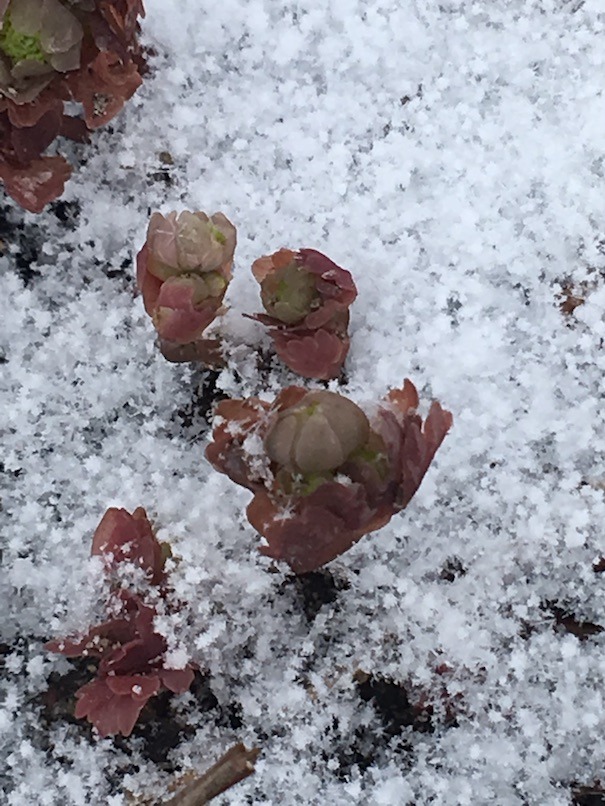
The snow disappeared that day and the plants went into action.
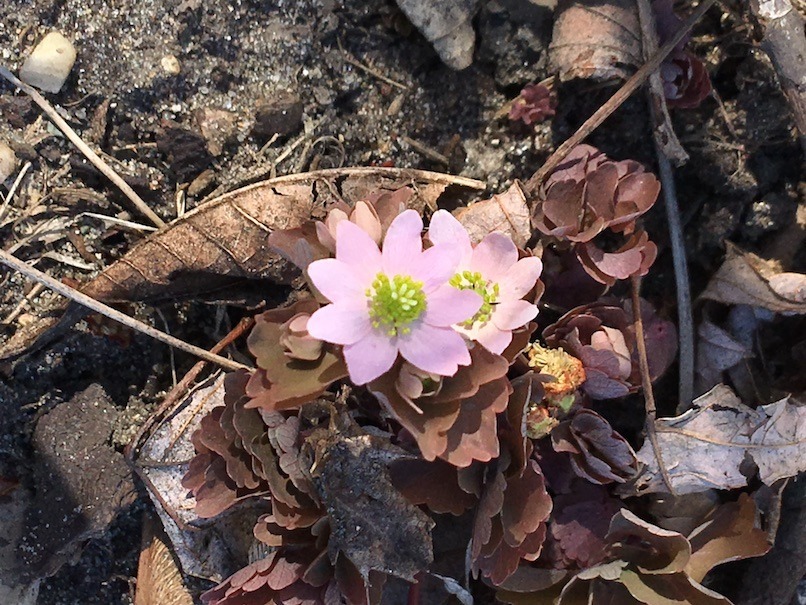
Twinleaf
My April 3 post showed twinleaf at budbreak, so here’s a little clump a few days later. There is no obvious green anywhere. The white leaves at the base are the shells to their underground capsules.
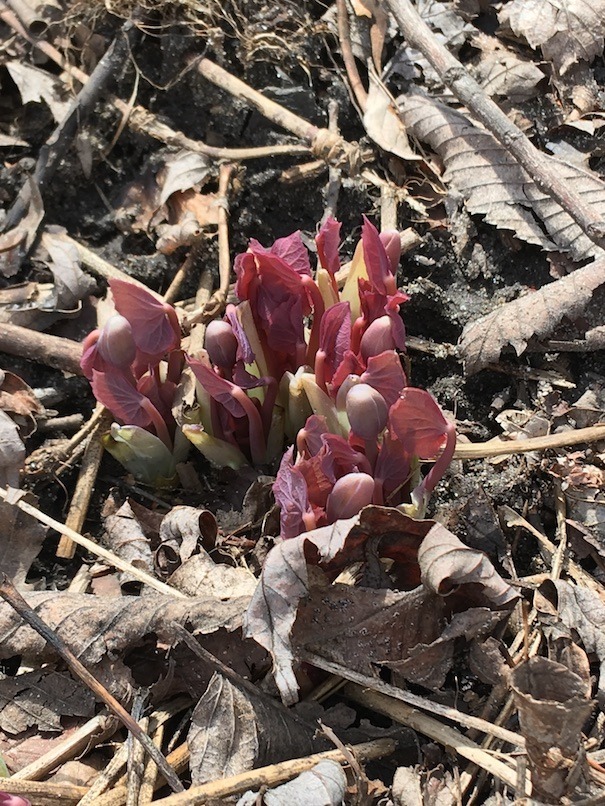
By April 22, the flowers were overtaking the leaves in their stretching.
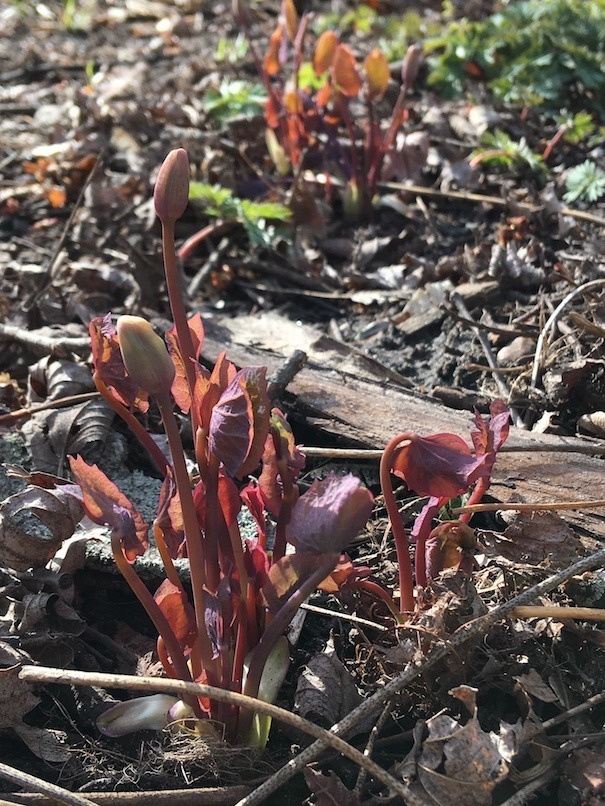
One warmish afternoon a few days later was all the encouragement they needed.
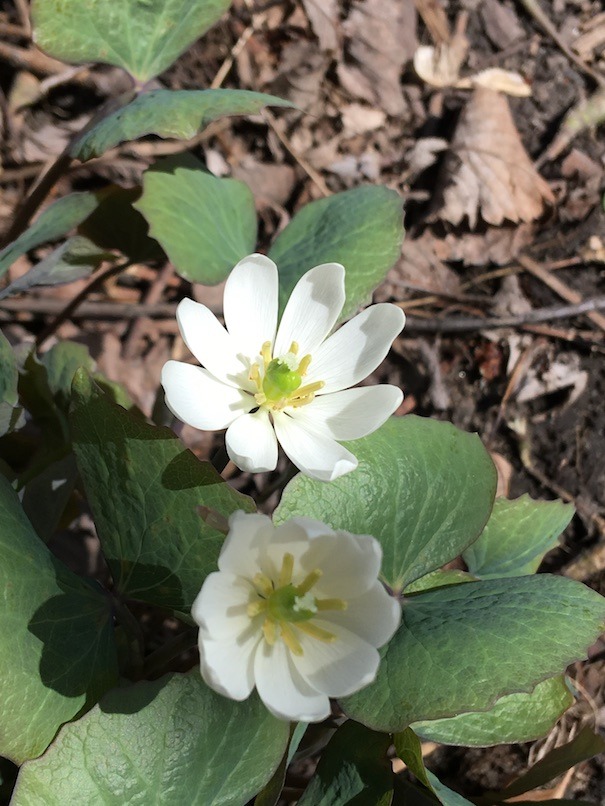
Other Happenings
The spring bulbs are blooming, and the redbud has little red buds. Last week, I looked at that pink Scilla bifolia ‘Rosea’ and realized there was a lot more of it scattered around than I thought, and that was in addition to the solid huge mass of them within the flowerbed. I realized that they had to go; I’ll write more on that in another post.
Meanwhile, the weather people are making noises about temperatures near 80°F later this week. That will bring plenty to write about, but what we really need is rain. The ground seems rather dry for April.